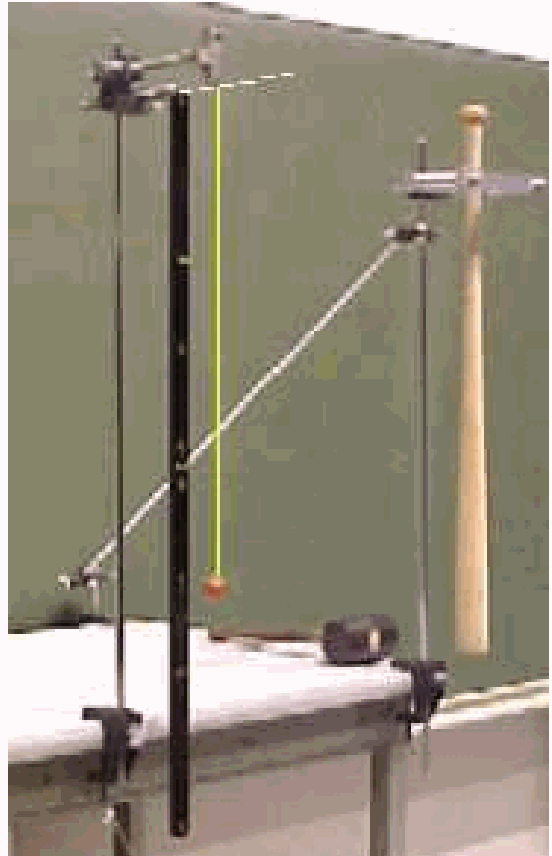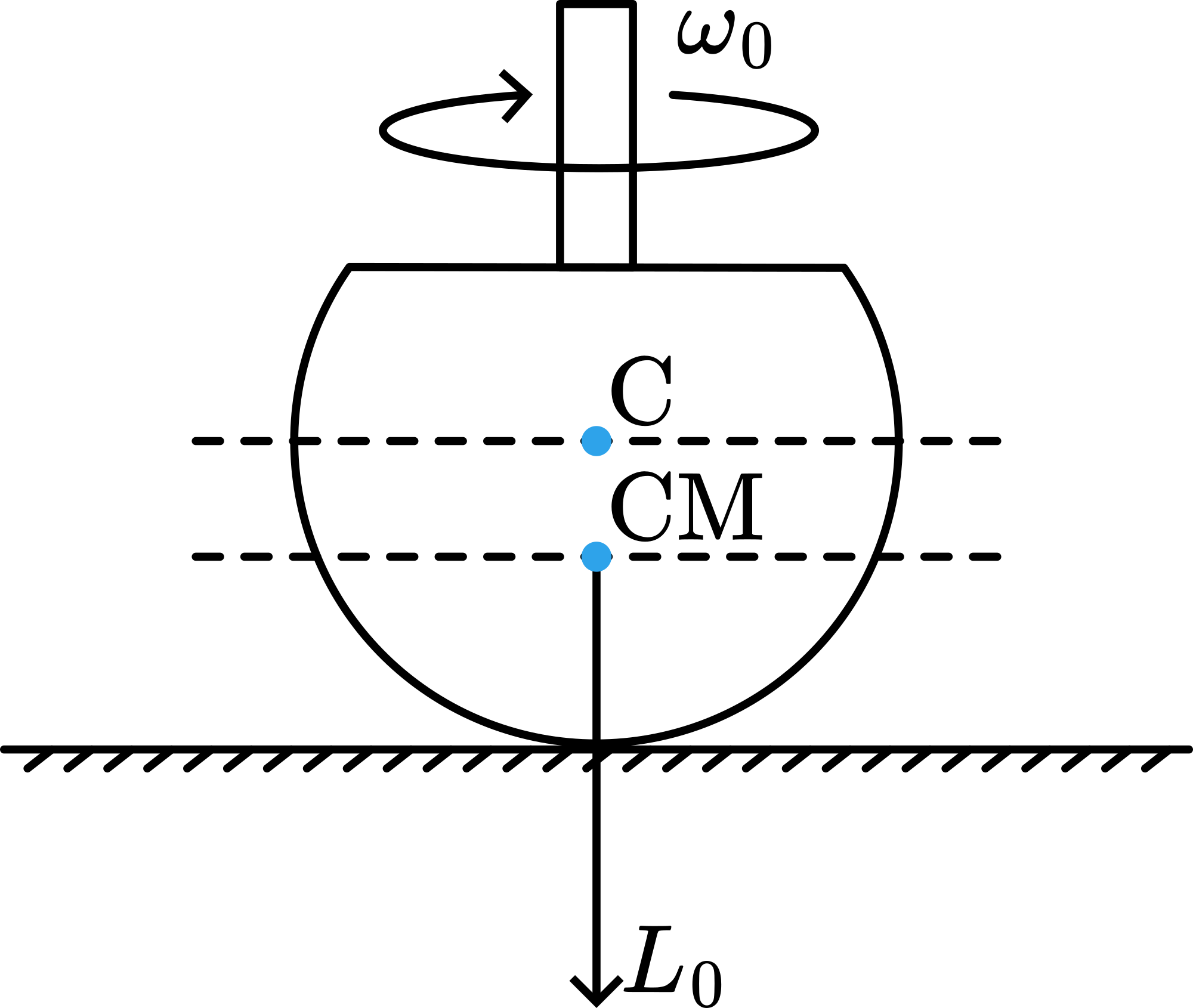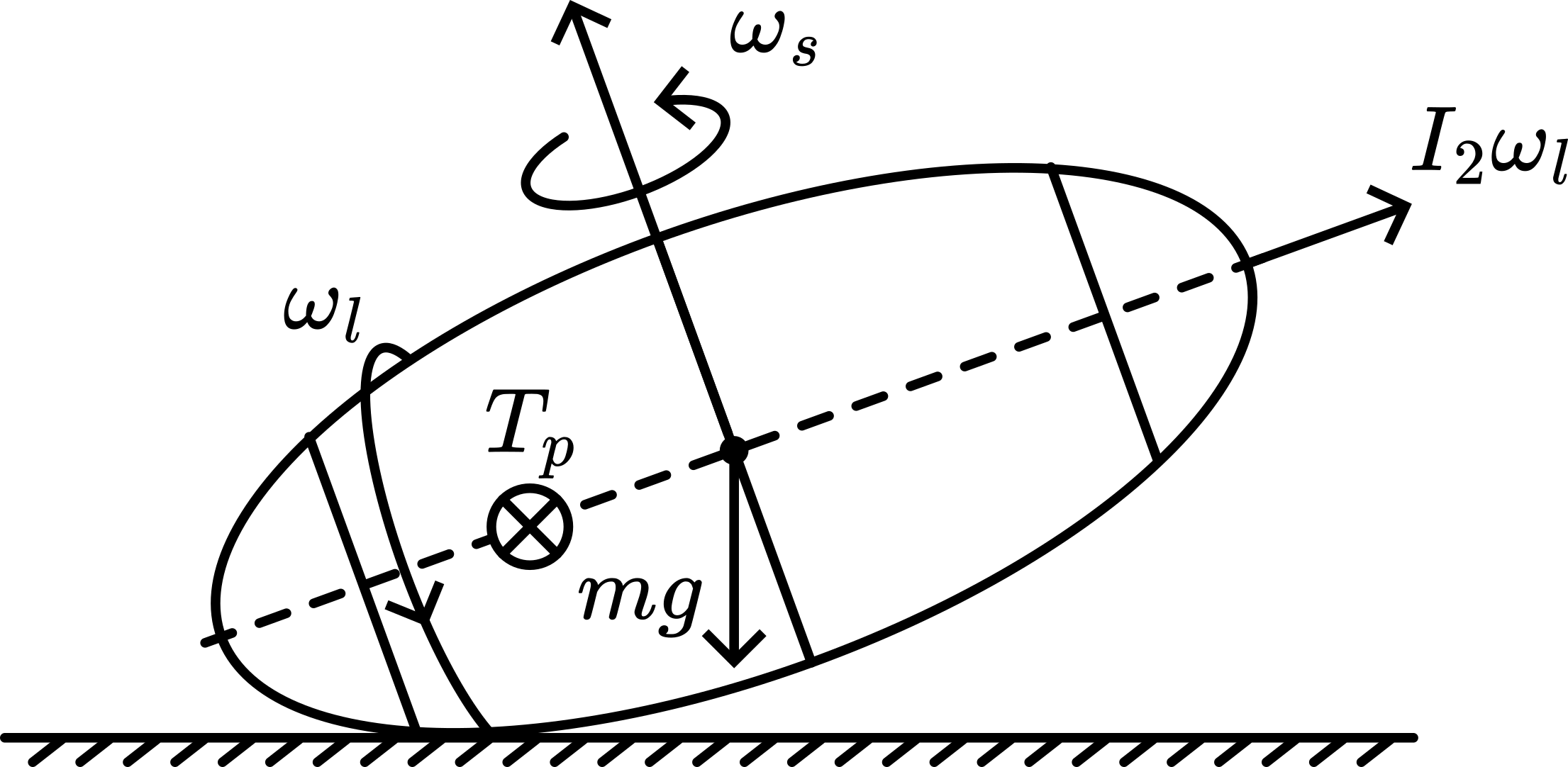08 Rugbyball#
Aim#
To show how a rotating rugby ball lifts itself
Subjects#
1Q60 (Rotational Stability)
Diagram#

Fig. 276 .#
Equipment#
Rugby ball
Presentation#
The rugby ball lies on the floor. By hand it is given a fast spin around its short axis (see Figure 277).

Fig. 277 .#
When the ball has made some turns it lifts itself, finally standing on its nose (tail) and rotating around its long axis.
Explanation#
When the ball turns around its short axis ( \(\omega_{s}\) ) it will tilt its long axis a little due to unbalanced mass distribution. Then spinning around its long axis \(\left(\omega_{/}\right)\) will start (see Figure 278) and at the same time, the long axis starts a precession ( \(I_{2} \omega_{1}\) moves into the direction of \(T_{p}\) ).

Fig. 278 .#
The point of contact slips on the floor (see Diagram). The friction force \(\left(F_{f}\right)\) on the ball is pointing in the same direction as its direction of precession. The torque ( \(T_{f}\) ) of this friction force is pointing upward (see Diagram), almost perpendicular to \(I_{2} \omega_{\nu}\). So the friction force gives a torque that erects the ball ( \(I_{2} \omega /\) moves into the direction of \(T_{f}\) ).
See also the demonstrations Precession 3a and Precession 3b in this database where it is shown how a precessing object reacts to an applied torque.
Remarks#
Friction between ball and floor must be high enough to make this demonstration successful.
This demonstration can also be done with a hardboiled egg. Doing it on my kitchen table, the angular speed of the egg must be quite high to reach the lifting effect.
Sources#
Borghouts, A.N., Inleiding in de Mechanica, pag. 230-231
Friedrich, Artur, Handbuch der experimentellen Schulphysik, part 2, Mechanik der festen Körper, pag. 233-235
Roest, R., Inleiding Mechanica, pag. 230-231
